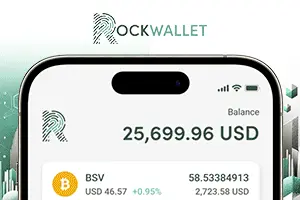|
Getting your Trinity Audio player ready...
|
The lofty promises of blockchain technology are no longer just promises: tokenization is seeing wide-scale adoption, stablecoins are carving a route for the unbanked to participate in the financial system, and smart contracts are being used to trim inefficiencies in supply chains.
So, amidst all these individual use-cases, why does it still feel like the financial system hasn’t modernized all that much?
Part of the problem is that these initiatives have largely been driven from the ground up, developed in isolation by private teams set on addressing one issue at a time. Maybe some groups of builders cluster around one tech ecosystem and find some way to synergize their offerings, but largely the industry is so splintered that there’s very little interoperability between what’s available. Legacy financial systems are similarly fragmented, making it difficult for fintechs to deliver solutions that can be applied broadly to existing structures.
This matters. In a globalized financial system with endless contingencies, disparate entities with wildly different data, practices, and priorities depend on one another to play their distinct roles. A solution to, say, put stock certificates on-chain is going to deliver immediate benefits for a company looking to make its shareholders’ lives easier. Still, unless it can connect with whatever digital initiatives brokerages are experimenting with, the potential for these products to deliver system-wide benefits is limited.
Enter CDM, or the Common Domain Model. Essentially acting as a voluntary industry standard, CDM is intended to be a universal language for financial transactions, ensuring each participant in the system can communicate on the same terms throughout a transaction’s lifecycle.
CDM means interoperability, which means efficiency
“The Common Domain Model (CDM) is like a universal language for finance,” explains Richard Baker, founder and CEO of fintech platform Tokenovate.
“Instead of every bank, fund manager, or clearing house speaking in their own code, CDM provides one shared, machine-readable format for contracts, events, and legal terms.”
CDM was initially developed by the International Swaps and Derivatives Association (ISDA), a global derivatives industry body. It was created in response to what ISDA saw as a highly fragmented industry without a singular approach to recording and processing financial instruments and transactions.
By encouraging industry adoption of CDM, the goal is to reduce friction and cost across the entire transaction lifecycle.
It also means that tomorrow’s financial entrepreneur doesn’t need to build from scratch and doesn’t need to worry about which other otherwise complementary products they might be excluding by making one design choice or another: if they’re all talking the same language to begin with, then successive solutions can work together right out of the box.
In essence, CDM is designed to foster interoperability throughout the financial industry.
“Interoperability decides whether digital markets are open and connected, or just digital silos. CDM-first design means firms can link legacy systems, new FMIs, and distributed ledgers without rebuilding everything from scratch. It reduces integration cost, unlocks competition, and stops collateral from becoming fragmented across blockchains,” explains Baker.
Baker’s Tokenovate is one such firm that has made CDM a central part of its approach to building financial solutions. Tokenovate is an automation platform for derivatives and securities transactions, making use of smart contracts and tokenization to automate the post-trade lifecycle. This works seamlessly across different platforms and with different asset classes—something it manages to achieve, thanks to Tokenovate’s embrace of CDM.
“We use CDM at the core of our platform so that financial agreements are not just documents, but executable workflows that can run automatically across capture, orchestration, and settlement.”In other words, it’s a manifestation of the future that CDM envisions, with interoperability placed front and center as Tokenovate builds its solutions.
Government leadership
The push toward interoperability is one aspect of the blockchain revolution where the government can play a significant role.
This might seem strange to some: after all, governments around the world have been among the latecomers to the blockchain revolution (though not equally). But they’re also insulated from some of the competitive concerns that has part-led to such a fractured status quo.
“Governments are best placed to create clarity and incentives through roadmaps, pilots, or procurement signals. But standards thrive when built and tested by industry in the open. Coordination in the private sector is often undermined by closed, proprietary systems,” said Baker.
“CDM cuts through that by lowering switching costs and creating common infrastructure. The U.K.’s FMI timelines for T+1 settlement, for example, send a clear signal that nudges the whole market toward adoption,” he added.
Here, Baker is referring to recent mandates from the United Kingdom government to reduce the maximum settlement time for securities trades from two days to one day. Tighter settlement turnarounds will inevitably push firms toward exploring automation. In turn, this will further highlight the need for common standards like CDM.
This isn’t an accident: there are signals that the U.K. is ready to take a leadership position in this push toward efficiency and interoperability. Recently, MP Matt Vickers’s op-ed appeared on Politics.co.uk, advocating that the U.K. embrace a ‘smarter future for finance’ by using CDM to deliver interoperable digital architecture for smarter systems.
“It is vital that the UK becomes a creator, not just a consumer of these technologies,” it reads. “Let’s deliver interoperable architecture – anchored in standards like CDM – to prove how bold, connected and responsible innovation looks.”
Vickers provides an easy-win example of what this might look like. The U.K. has already announced a Digital Gilt Instrument (DIGIT) pilot, which is looking at how to issue government bonds on the blockchain. Recently, the government shared feedback it had collected from the market on what the pilot should prioritize. Among the key responses: interoperability.
“Responses highlighted that a key barrier to adoption of digital ledger technology is that it could lead to a fragmented market,” reads the update.
“The government will look to work with industry, platform providers and existing market infrastructure providers to foster interoperability in supporting access to DIGIT from investors operating in both traditional and DLT markets.”
Baker calls pilots like DIGIT crucial.
“DIGIT shows how a government bond can be issued, traded and used as repo collateral in a digital-native way, with intraday settlement and unified audit trails. And with CDM you make gilts work with other assets seamlessly.
“The end result is a substantial reduction in cost and risk, all while overall market transparency improves – something governments and regulators desire.”
Watch: Richard Baker on engineering a smarter financial world with blockchain

 12-07-2025
12-07-2025 





